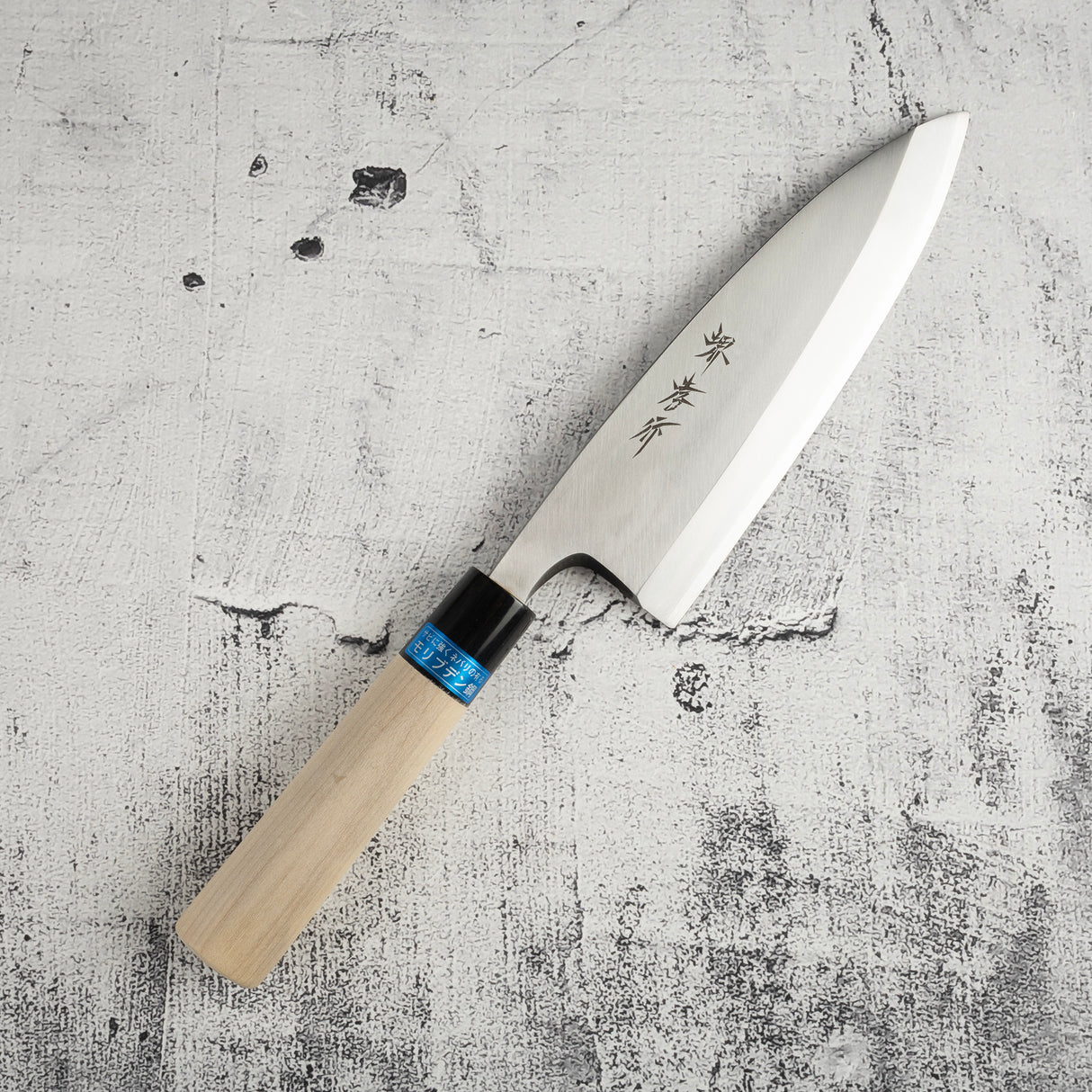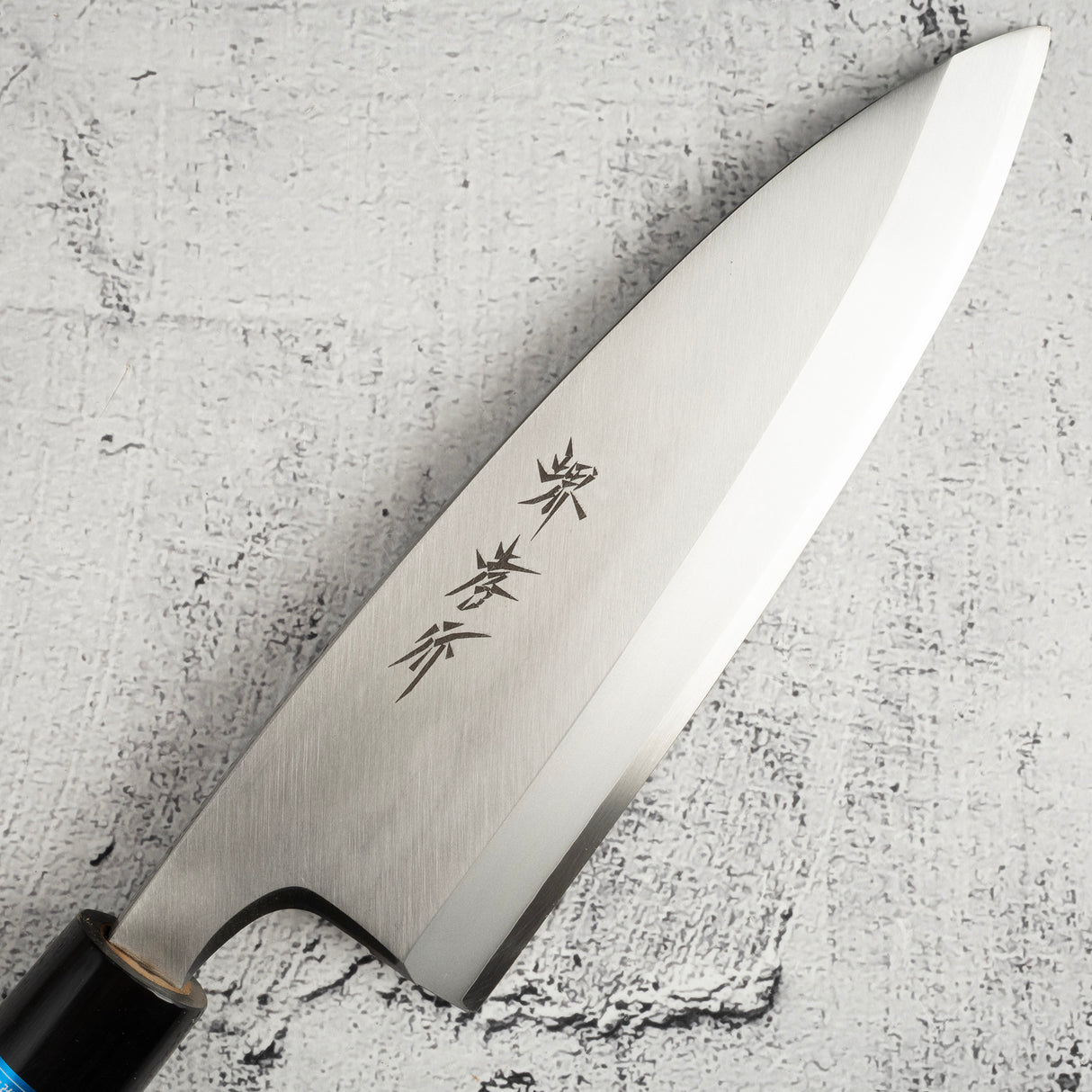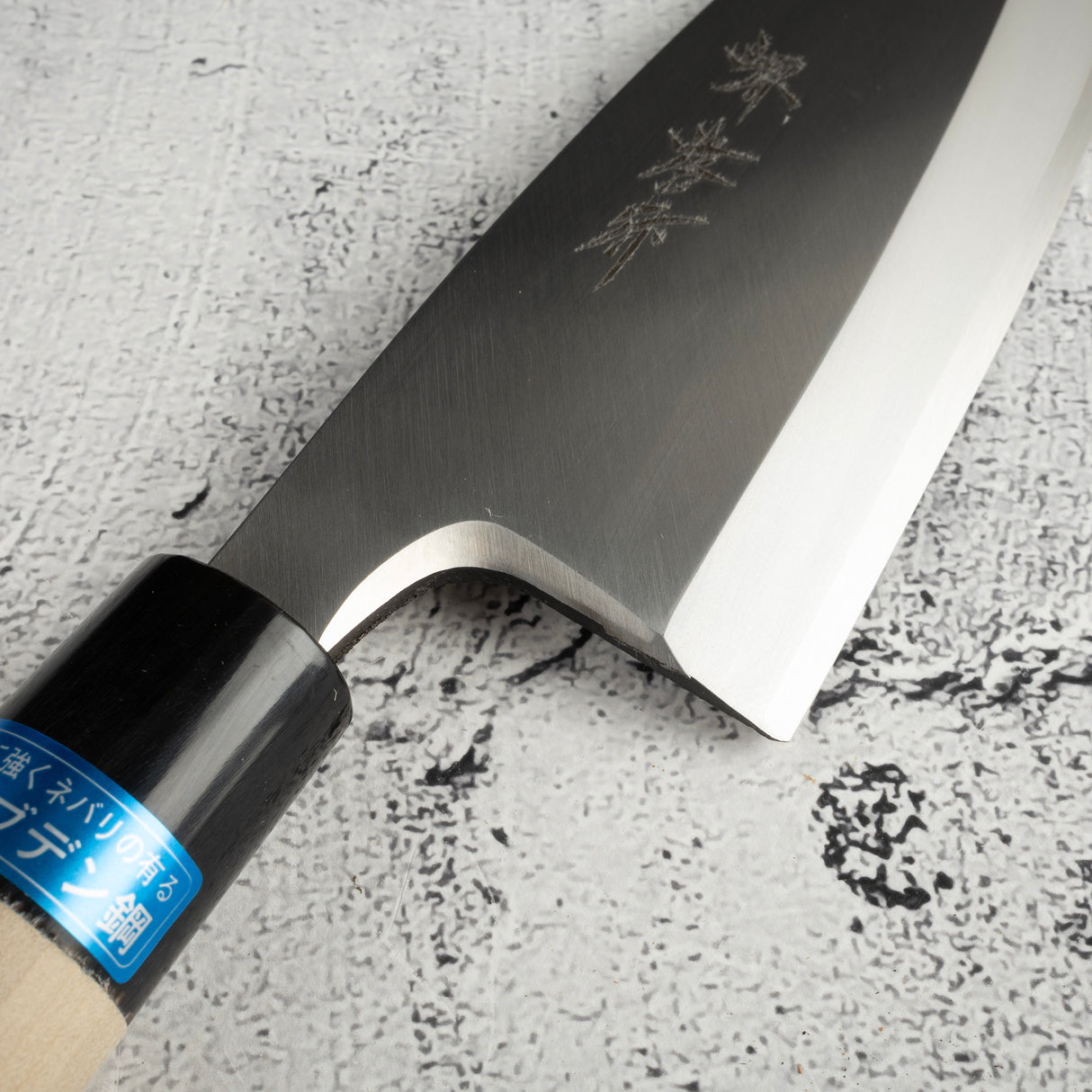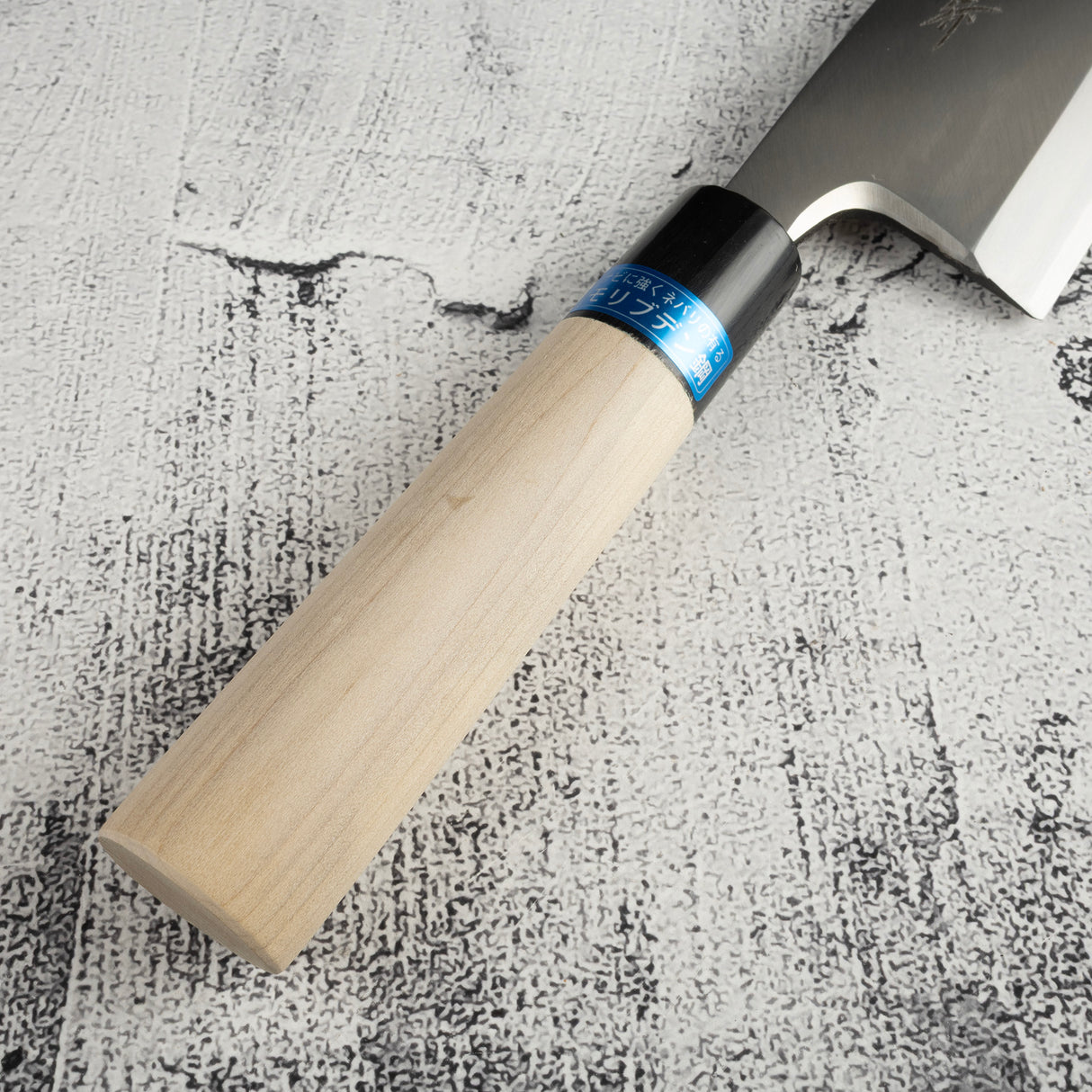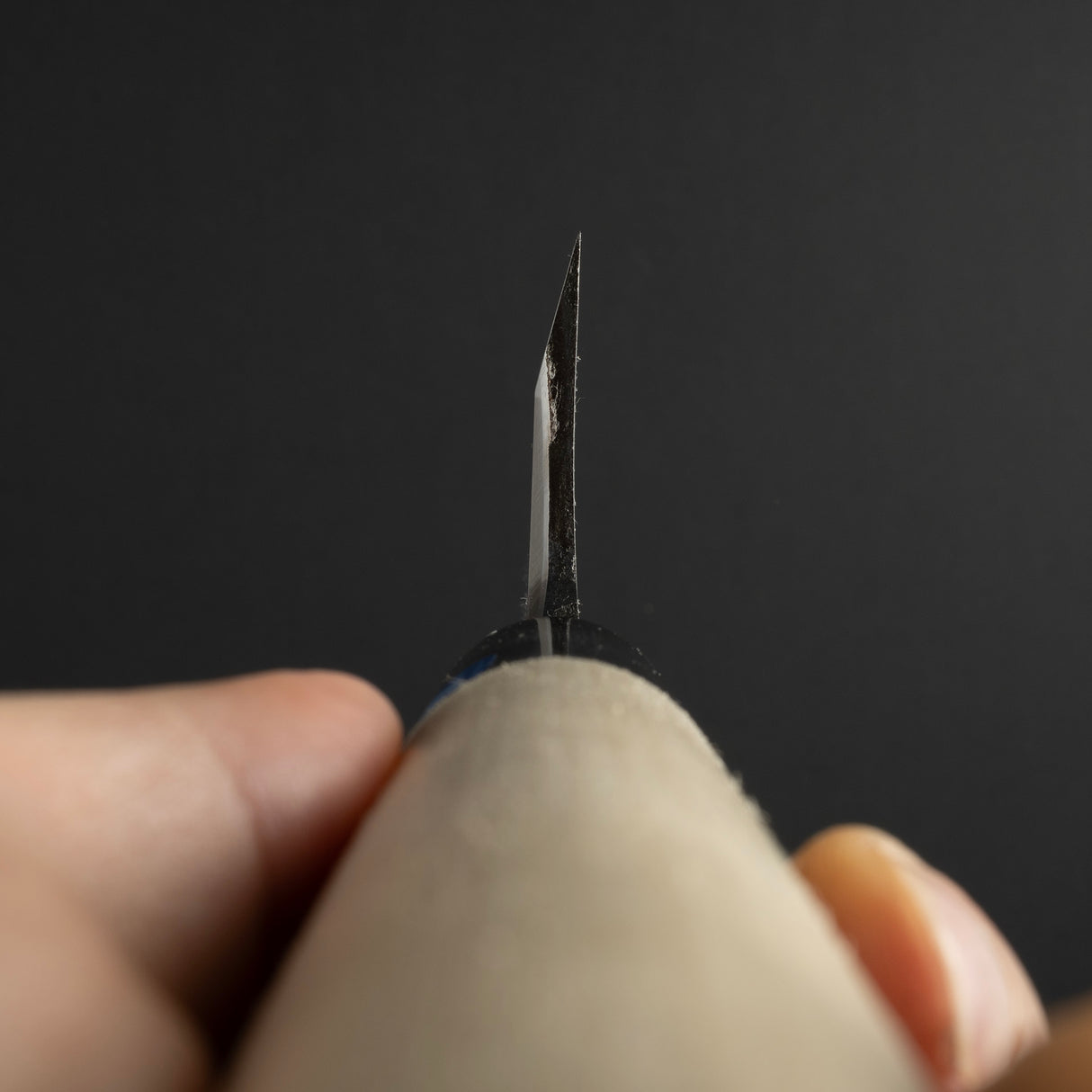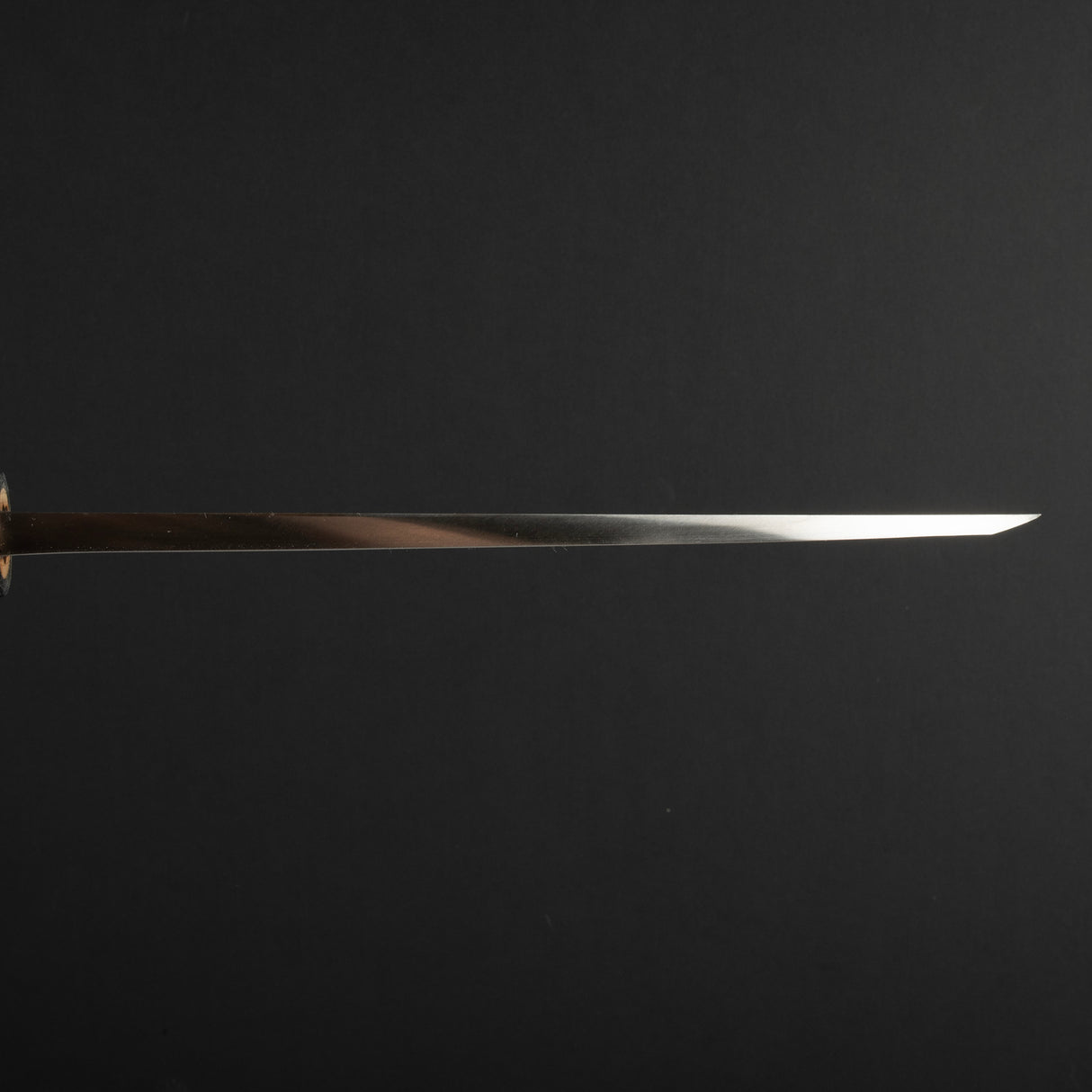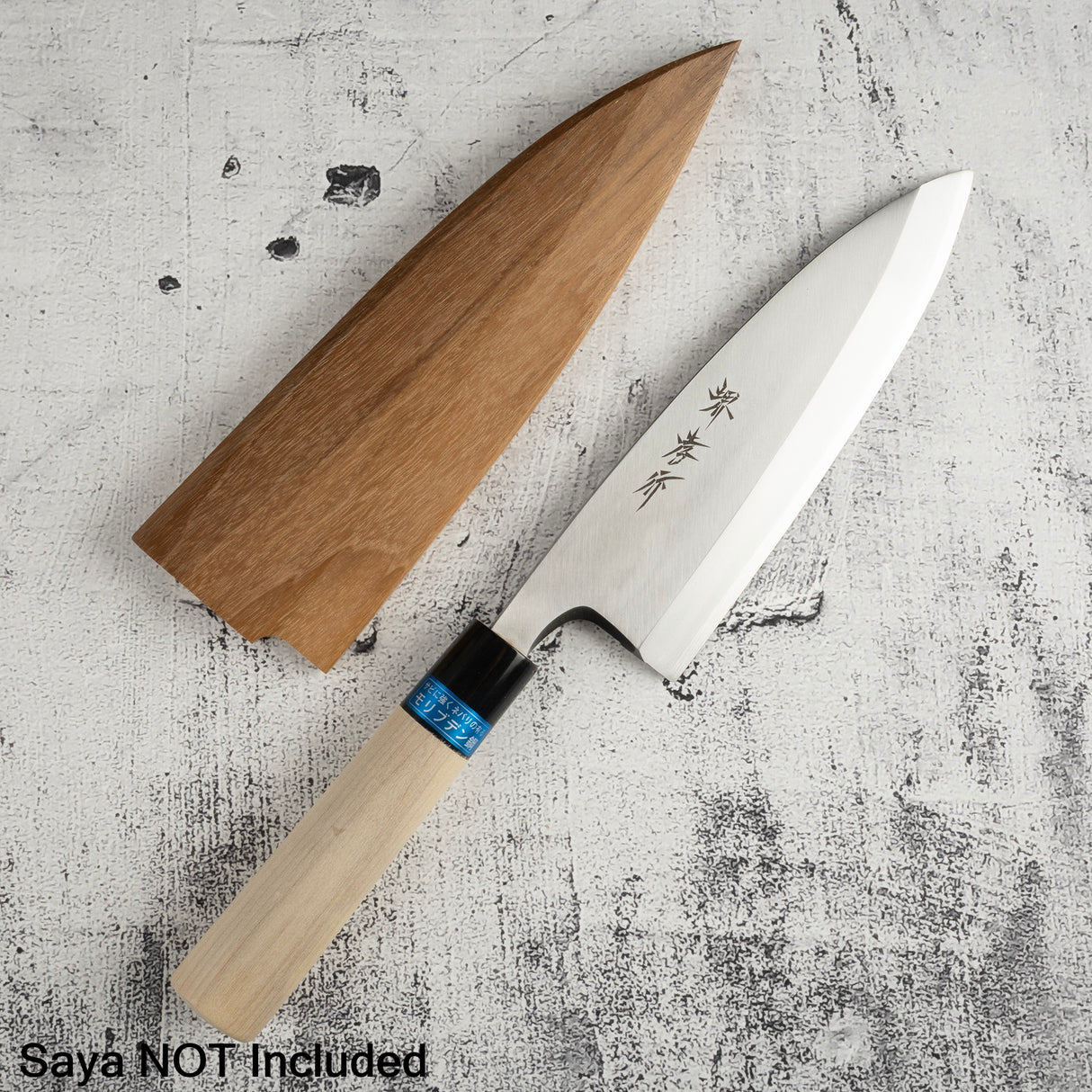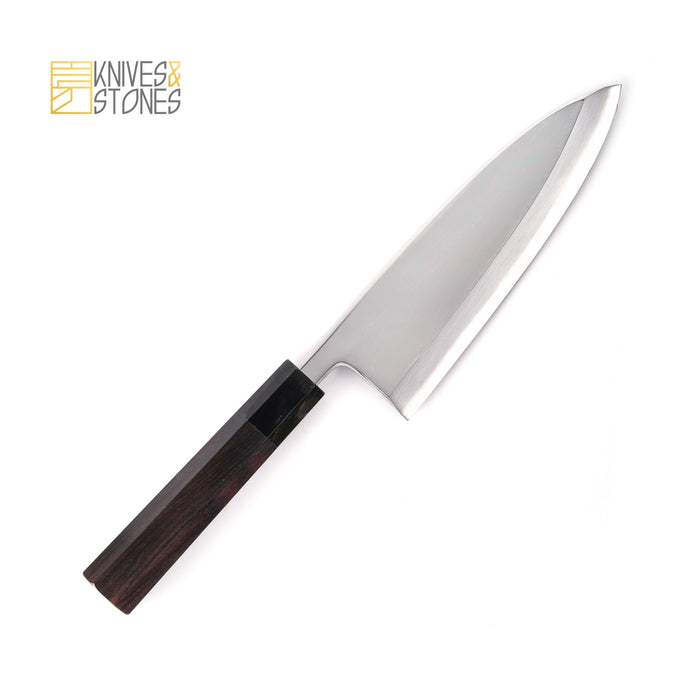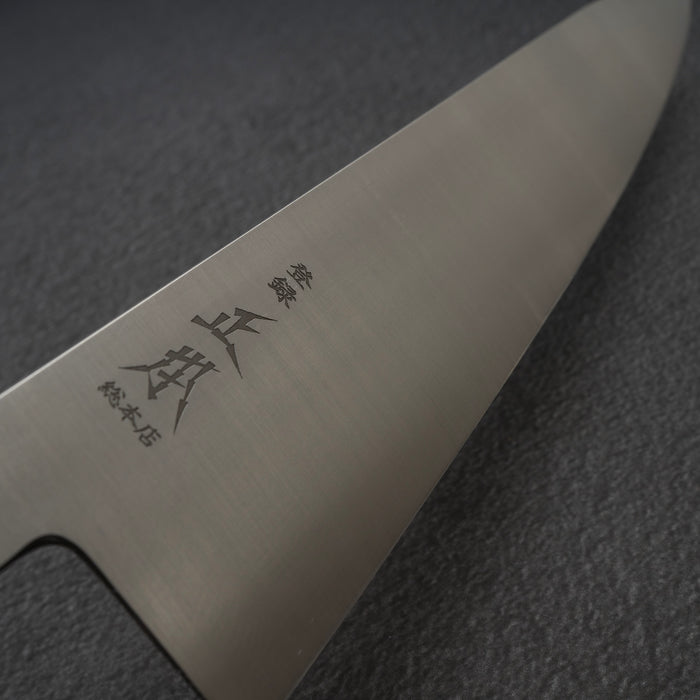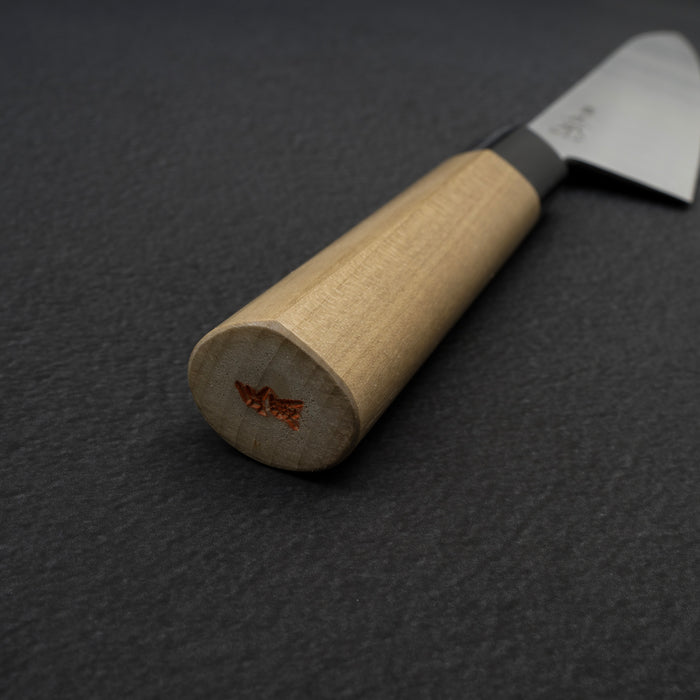Sakai Takayuki | SKU:
SATA_INOX_DE180
Sakai Takayuki INOX Stainless Deba 180mm (7.1")
Sale price
$5,085.00
Regular price
$5,970.00
Unit price
/
Unavailable
Sakai Takayuki INOX Stainless Deba 180mm (7.1") is backordered and will ship as soon as it is back in stock.
Couldn't load pickup availability
Detailed Specifications
| Line | Sakai Takayuki Inox |
| Profile | Deba |
| Bevel Type | Single Bevel |
| Weight | 308 g | 10.9 oz |
| Edge Length | 180 mm | 7 3/32″ |
| Heel Height | 55 mm | 2 11/64″ |
| Width @ Spine | 6.5 mm | 1/4″ |
| Width @ Mid | 5.5 mm | 7/32″ |
| Width @ 1cm from Tip | 2.8 mm | 7/64″ |
| Steel | Inox | Stainless |
| Blade Construction | Nimai - Stainless Clad |
| Hardness (HRC) | 57 - 59 |
| Surface Finish | Migaki |
| Handle | D Shaped Ho Wood Black Ferrule |
| Region | Sakai |
| Best for |
|

| Pros | Cons |
|
|
|
Care Instruction
- Don't cut hard things! Japanese knives are brittle so bone hacking is a NO NO!
- Wash with neutral detergent after use, and wipe dry;
- Please don't wash knife with dishwasher, it will damage the wood handle;
- Be careful not to leave the knife close to a heat source for a long time;
- It is a lot more dangerous to cut with a blunt knife than a sharp knife!
- It is best to sharpen a Japanese knife regularly on a waterstone.

